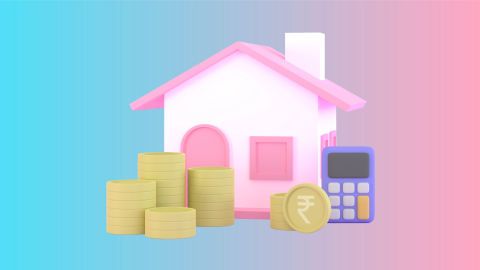Gratuity, a form of financial reward bestowed upon employees for their dedicated service, serves as a token of appreciation and financial security upon retirement, resignation, or in the event of death or disablement. Governed by the Payment of Gratuity Act, 1972, this benefit is a cornerstone of employee welfare and social security in India. Understanding the criteria for gratuity eligibility is essential for both employers and employees to ensure compliance with the law and facilitate a seamless process of gratuity payment.
Moreover, grasping the nuances of gratuity eligibility is indispensable for employees who are planning their long-term financial security. Consider, for instance, individuals managing substantial financial commitments like a home loan. For them, knowing their gratuity eligibility becomes integral to effective financial planning. It allows them to seamlessly integrate future financial benefits and obligations into their overall financial strategy.
This handy guide aims to provide comprehensive insights into the criteria for gratuity eligibility, covering key aspects such as eligibility conditions, calculation methods, and procedural requirements.
Eligibility criteria for gratuity
- Length of service: The primary eligibility criterion for gratuity is the completion of a minimum period of continuous service with the same employer. As per the Payment of Gratuity Act, 1972, an employee becomes eligible for gratuity upon completing five years of continuous service. However, this condition is waived in the case of death or disablement due to accident or illness.
- Nature of employment: The employee must be employed in an establishment covered under the Payment of Gratuity Act, 1972, to be eligible for gratuity. Covered establishments include factories, mines, oilfields, plantations, ports, railway companies, shops, and other notified establishments.
Calculation of the gratuity amount
The amount of gratuity payable to an employee is calculated using the formula:
Gratuity = (Last Drawn Salary × Number of Completed Years of Service × 15) / 26
Where:
- Last drawn salary includes basic salary, dearness allowance, and any commission based on sales.
- Number of completed years of service is the total number of years the employee has worked with the employer.
- 15/26 represents 15 days out of 26 working days in a month.
Documentation and process
To claim gratuity, an employee or their nominee must submit a formal application to the employer. The following documents are generally required:
- Gratuity claim application
- Service certificate
- Identity proof
- Address proof
- Bank account details
Once the application is submitted, the employer is required to process the claim and disburse the gratuity amount within 30 days. If the employer fails to pay the gratuity, the employee can file a complaint with the controlling authority under the Payment of Gratuity Act.
Legal rights and protections
Employees are entitled to several legal rights and protections under the Payment of Gratuity Act, 1972, including:
- Timely payment of gratuity
- Interest on delayed gratuity payment
- Protection against wrongful denial of gratuity
- Legal recourse in case of disputes
Tax implications of gratuity
Gratuity received by employees is subject to tax implications as per the Income Tax Act, 1961. The gratuity rules vary based on the employee's status (government or non-government employee):
- For government employees, gratuity is fully exempt from tax.
- For non-government employees, gratuity is tax-exempt up to a certain limit, currently set at Rs. 20 lakh. Any amount exceeding this limit is taxable as per the individual's income tax slab.
Calculation of gratuity in case of death of an employee
Tenure of service |
Amount payable towards gratuity |
Less than a year |
No gratuity is payable |
1 year or more but less than 5 years |
6 times the basic salary |
5 years or more but less than 11 years |
12 times the basic salary |
11 years or more but less than 20 years |
20 times the basic salary |
20 years or more |
Half of the basic salary for each completed six-monthly period, subject to a maximum of 33 times the basic salary |
Consider Bajaj Housing Finance Home Loan
As you explore financial planning options and consider using your gratuity to achieve homeownership, Bajaj Housing Finance provides customized home loan solutions to transform your dream of owning a home into a tangible reality. With our streamlined and customer-focused approach, we recognize the importance of offering straightforward financial support to individuals embarking on their journey to homeownership.
Here are a few reasons why you should choose Bajaj Housing Finance Home Loan:
- Flexible repayment options: Benefit from extended repayment periods of up to 32 years, allowing you to choose a plan that best aligns with your financial situation, making repayment more manageable.
- Competitive interest rates: Start your journey to homeownership with attractive interest rates beginning at just 8.25%* p.a, and EMIs as low as Rs. 741/lakh*, making home ownership more affordable.
- Customisable loan options: Customize your home loan to suit your specific needs with varying loan amounts, and repayment terms, providing you with greater control over the home-buying process.
- Top-up loan facility: Increase your financial flexibility with a top-up loan facility, offering additional funds of Rs. 1 crore* or higher at competitive interest rates and minimal documentation, simplifying the management of a home loan balance transfer.
Explore Bajaj Housing Finance Home Loan today and take the first step towards turning your dream home into a reality.




